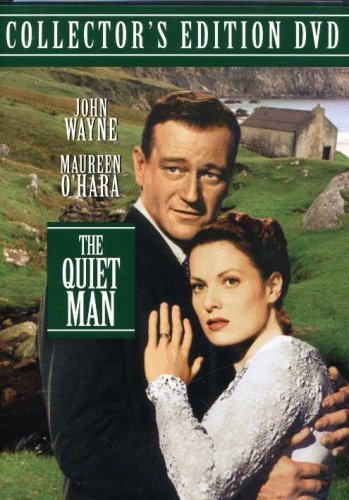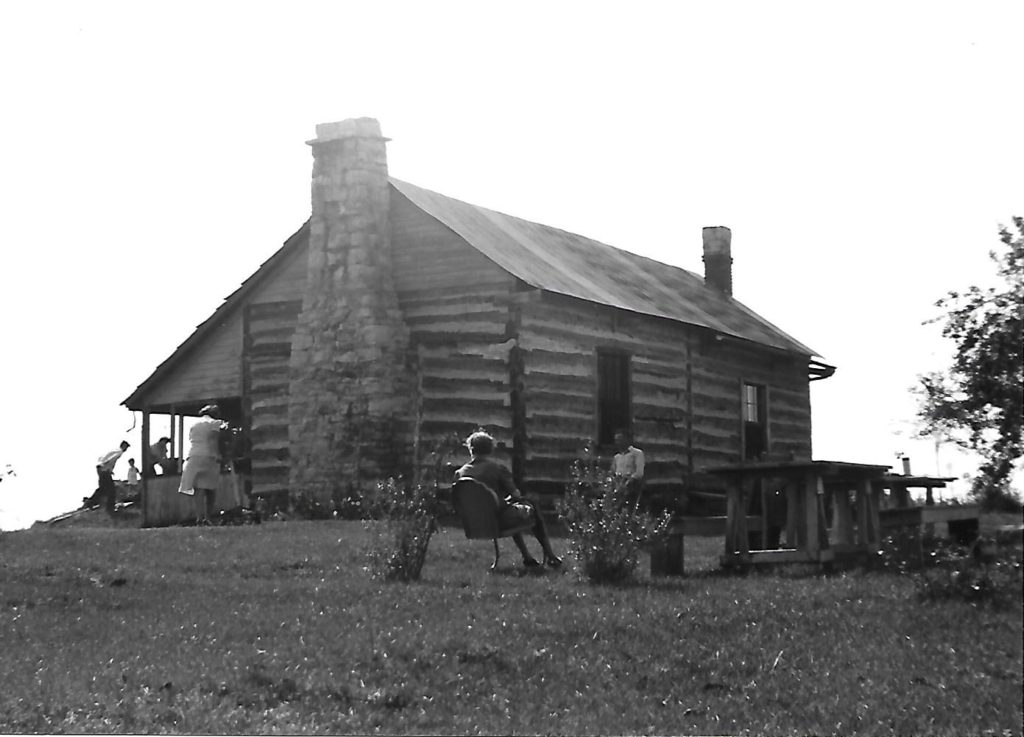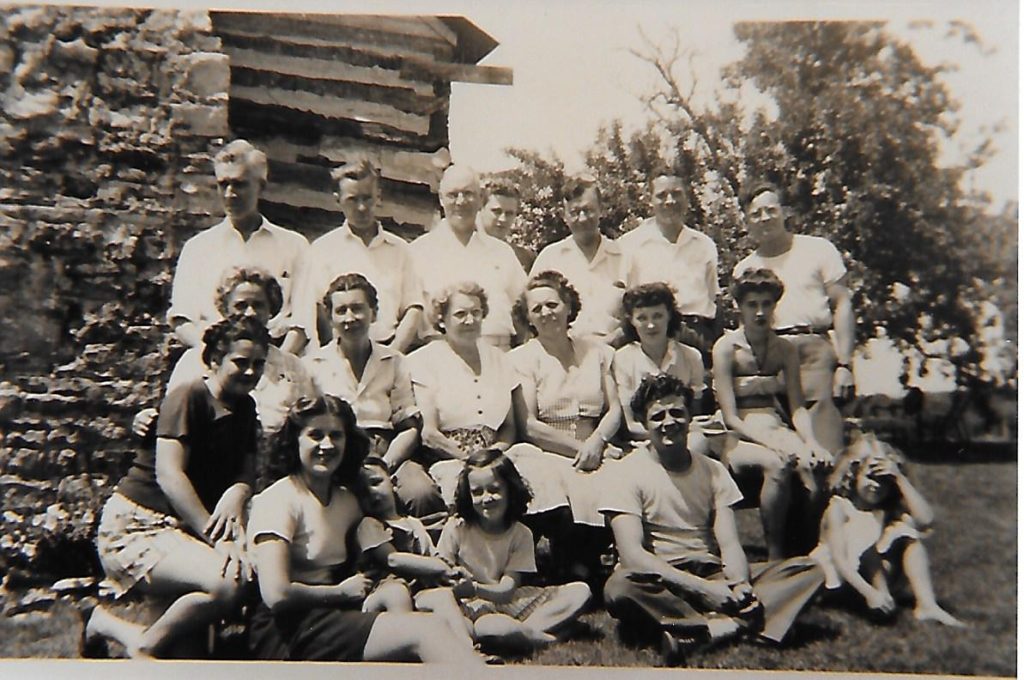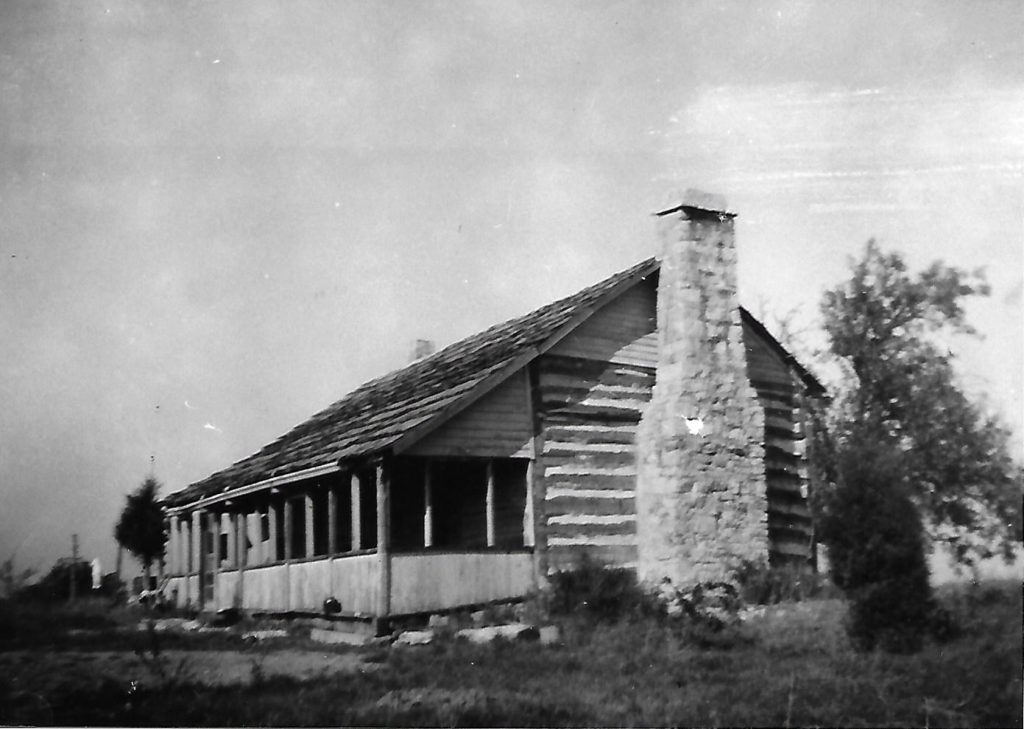Jim and Hazel’s Farm

Why did my father, James Barton Kelly start a cow farm after a career as a corporate executive? He named his farm White O Morn Farm in tribute to his favorite movie, The Quiet Man, starring John Wayne and Maureen O'Hara. Why was the Quiet Man Jim's favorite movie?
Here's a reminiscence about the Kelly family farm in Missouri, with ma and pa Kelly, (James Christopher and Hazel), and their sons Jim, Jack and Mike. This was written by Mike.
Growing up in Illinois
The log cabin was on the crest of the highest hill on the Hillsboro-House Springs Road where the road makes a sharp 90 degree turn. The view was spectacular as a valley lay to the north and east up to 200 feet lower. To the south and west the land gently sloped away. In the unpolluted air of those years you could see the clouds and blue sky all the way down to the horizon. You could see the rain advancing across the fields in the summer. In the morning you could sometimes hear soft diesel air horns in the distance. The MoPac was about 7 miles away in an arc running from Hematite to Pevely. The trains I heard were probably sections of the Texas Eagle inbound to Saint Louis. My aunt Bertha’s husband Charles McRill survived a train wreck at Horine Creek in June 1938 when the bridge washed out and his engine went into the creek. The trains were sort of a modern intrusion as were the two or four engine passenger planes that would sometimes slowly come into view then disappear. This was old country, not South Saint Louis, a different world.

All of the country roads back then were gravel. Bedrock was at the surface in many places and these roads had a “washboard” profile where the layered steps of stripped-off limestone were just barely covered. The gravel was not crushed limestone which would pack down but chert, brown local stream stone that was rounded. It was easily scattered by cars. A road grader would come by and attempt to smooth the road and push back the gravel on curves. This was only good for a few days on the washboard areas. Getting stuck behind a road grader was a slow, hot and dusty experience. (Who had an air-conditioned car back then)? When you drove these roads, you knew where to slow down to avoid a brain rattling ride.

My parents had provided a sandbox for me close to the garage. We would get sand for it from the “sand pit”, a small low cut on Hayden Road almost at the junction with the H-HS Road. It was pure sand, no dirt. On a first trip of the year, I fished my sandbox shovel and rake out of the old garage and was surprised to see how small they were. I was disappointed that I had outgrown them. So ends early childhood. In the garage there was a pick, a two-man buck saw and the post hole digger. The big cast iron kettle that mom kept was also close by in the yard used as a planter.
Blackberry picking was a summertime activity. Sometimes they were very good and other times they had dried up. The wild vines were among the tall weeds and, aside from ragweed allergy, one could get as many cockleburs on your clothes and socks as berries in your pail. We had a red and yellow shaker can of sulfur powder to apply to our ankles, wrists and neck to keep ticks away. I hated that.

Oak logs for the home were certainly cut from the local forest. Many trees had to be felled to build it and a lot of labor to haul and shape the logs. There were axe and adz marks all over the logs. One of the outbuildings was called the saw shed. The saw was long gone by the time I was there. The oak flooring was sawn. The windows and coal oil lamps were original. Some glass panes and lamp chimneys were tinged a very pale lavender from sun exposure. The oldest glass panes were a bit wavy and had tiny bubbles. The porch screen door had the old fashioned long coiled spring closer attached by s-hooks to eyes. This worked well and delivered a good slam every time.
The cistern provided good, cool water that had a little bit of sulfur taste. I didn’t really like it much. Dad, Jim and Jack worked to build it up about four feet above ground level and installed the bucket chain and housing on a wooden platform. The buckets were square, flat-bottomed, galvanized steel. Each one held less than half a pint. When you wanted a drink, it took some cranking before the filled buckets would reach the spout, tip over and pour out. Jack built a little pond next to the cistern for me to play in, but it didn’t hold water.
Our only neighbors were the Brandt’s and the Schorr’s. There were no other houses around in my earliest recollection. The Brandt’s lived at the first gentle curve past the house. I don’t remember much about them. They had a son who served in WWII. His discharge paper was framed and hung on the wall. They did farm a little patch between our houses and paid a small rent for the ground. The Schorr’s lived in the valley just below the home. Their farm is still there. Their garage had old license plates nailed up on the wall from the 1930’s. We would get chickens from them which Mr. Schorr would dispatch, defeather and clean. I liked to go to the chicken coop and shuck corn for the chickens. It’s pretty easy once you get the hang of it. The chickens were my best friends! There was a collection of neat rocks landscaping the house that I always enjoyed examining. The house was always cool and quiet except for the grandfather clock slowly ticking in the living room with sunlight trying to lighten the room. When their son, Walter came back from WWII, he brought the first radio the family had.
Looking back, this place was idyllic, but for mom and dad it was a big chore to keep up. We spent most weekends there in the summer, leaving on Saturday morning-afternoon when dad had to work a half-day-and coming home Sunday late afternoon. They spent a lot of time mowing what little grass was there and doing gardening. By the time those chores were done, it was time to come home. When they purchased the house at 4121 Fairview in early 1954 there was enough space to do all of the gardening they wanted, so they sold the last of the place. Jim and Jack were both married and living far away. These were good times, but meant for younger people.
Hazel Jean Olive Barton and James Christopher Kelly on Ancestry.com
[…] money on the cows but that didn't matter. He just wanted to be a farmer, that was his idea of fun. Perhaps he was returning to his roots. The black and white striped cows were quite the phenomenon. 5 years have passed since he sold the […]